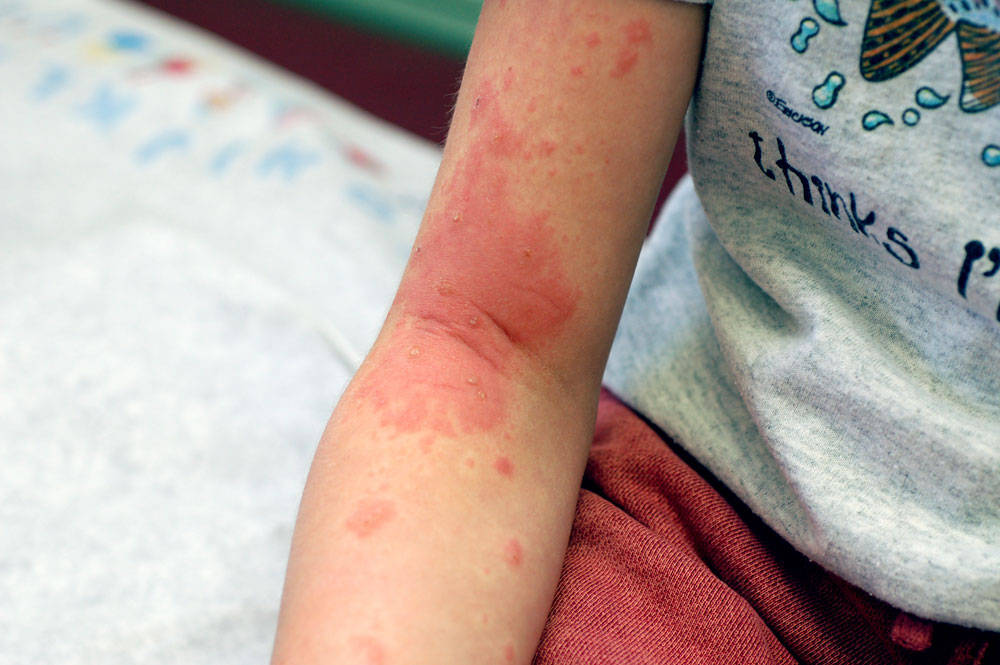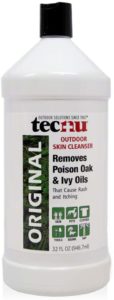
Here’s how climate change makes poison ivy worse.
Climate change is occurring because burning oil, coal and other fossil fuels releases gases like carbon dioxide (CO2). CO2 builds up in the atmosphere, trapping heat that causes temperatures on the ground to rise, creating a “greenhouse” effect on the earth. Poison ivy, and its equally annoying “cousins,” poison oak and poison sumac, are all growing bigger, spreading faster, and becoming more toxic in response to this “greenhouse effect.” Climate change makes poison ivy worse, and we’re more miserable because of it.
You may have already noticed that there’s more poison ivy in your yard or in the parks where your kids play. Dr. Lewis Ziska, a plant physiologist with the U.S. Department of Agriculture, told National Public Radio last year that “the poison ivy plant of, say, 1901, can grow up to 50 to 60 percent larger as of 2010” because there’s more CO2 in the atmosphere today than there was a hundred years ago.
“As a result of that change,” says Dr. Ziska, “we see not only more growth but also a more virulent form of the oil within poison ivy. The oil is called urushiol, and it’s that oil that causes that rash to occur on your skin when you come into contact with it.”
Because greenhouse gases are on the rise, poison ivy is likely to get worse in the coming years. It’s just one more reason why it’s so important to do everything we can to use less energy and switch to renewable energy sources that don’t emit carbon dioxide.
HOW TO AVOID POISON IVY

2) Dig it up. If you see it in your yard, use a long-handled shovel to dig it up. Make sure to wear a long-sleeved shirt, gloves, pants and boots to avoid any skin exposure. Dispose of the dug-up ivy in a large paper bag (like a paper shopping bag or leaf bag); don’t put poison ivy in your compost pile!
3) If you’re walking in the woods, stay on maintained trails. Chances are, if you or your kids go bushwhacking through an untamed woods, you’ll run into poison ivy somewhere along the way.
4) Wash your clothes as well as your skin. Urushiol, the toxic oil in poison ivy, can stay on clothes and rub off on your skin. You should wear protective clothing when dealing with this plant, then remove the clothes carefull and wash in hot water.
5) Keep your pets leashed when in the woods. Your dog won’t actually get poison ivy, but the urushiol oil can rub off on its fur, then transfer to you when you pet it. Keep your dog leashed when walking in woods where poison ivy could be lurking.
HOW TO TREAT POISON IVY
1) As quickly as possible after exposure, wash the exposed area with soap and water. You have only eight to ten minutes before the oil will be absorbed through your skin and into your system. Wash your pet, too. Wear gloves, use a grease-cutting soap, and don’t forget the paws!

3) Try an oatmeal bath. When I was pregnant with my first child, I got a horrible case of poison ivy. My baby wasn’t in any danger, but I was really miserable. My doctor recommended I create a poultice out of oatmeal, or take an oatmeal bath. The bath was somewhat soothing; it was certainly more effective on my skin than calamine lotion, which is what many people typically use for poison ivy relief. You can probably find oatmeal baths at your local drugstore; they’re also easily available on Amazon.
Please share any other ways you’ve treated poison ivy. Thanks.
RELATED POSTS:
Top Ten Ways to Save Energy and Money at Home
For more impacts, don’t miss this month’s Green Moms Carnival: Climate Change Affects Our Health, Our Homes, Our Families and Our Future
(Note: When you purchase any product from our store, we earn a small commission that helps us continue to provide you with free information about products and services. Our recommendations are unbiased and based on our research and impartial product reviews. Thanks.)



















4 thoughts on “How Climate Change Makes Poison Ivy Worse”
It’s not just global warming isn’t the only environmental factor contributing to the rise of poison ivy problems. Poison ivy is only partially shade tolerant, so it thrives in suburban areas where trees have been cut down to build communities.
(Incidentally, watch out for stinging nettles in developed areas, too. Stinging nettles thrive on high levels of nitrogen in soil. They love the areas around abandoned buildings.)
My son too, suffers from a poison ivy allergy that is getting worse every year. Sadly, he feels he can no longer go “off trail” in parks and in the woods behind our house, for fear of brushing against a poison ivy plant. Thanks for connecting these dots!
I hope your son (and your whole family) will still enjoy the outdoors – we don’t want to lose our connection to Mother Nature, right? Thanks for writing.
You could try alveo to avoid those things
Comments are closed.